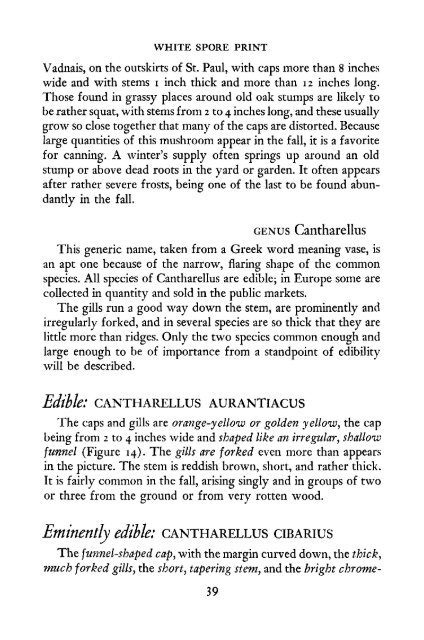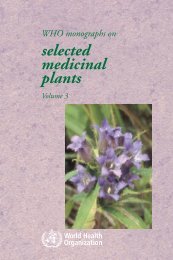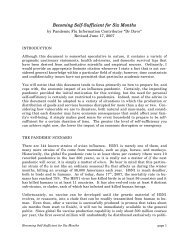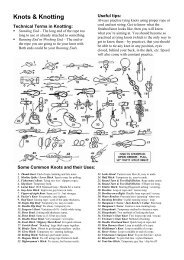Create successful ePaper yourself
Turn your PDF publications into a flip-book with our unique Google optimized e-Paper software.
WHITE SPORE PRINT<br />
Vadnais, on the outskirts of St. Paul, with caps more than 8 inches<br />
wide and with stems i inch thick and more than 12 inches long.<br />
Those found in grassy places around old oak stumps are likely to<br />
be rather squat, with stems from 2 to 4 inches long, and these usually<br />
grow so close together that many of the caps are distorted. Because<br />
large quantities of this mushroom appear in the fall, it is a favorite<br />
for canning. A winter's supply often springs up around an old<br />
stump or above dead roots in the yard or garden. It often appears<br />
after rather severe frosts, being one of the last to be found abundantly<br />
in the fall.<br />
GENUS Cantharellus<br />
This generic name, taken from a Greek word meaning vase, is<br />
an apt one because of the narrow, flaring shape of the common<br />
species. All species of Cantharellus are edible; in Europe some are<br />
collected in quantity and sold in the public markets.<br />
The gills run a good way down the stem, are prominently and<br />
irregularly forked, and in several species are so thick that they are<br />
little more than ridges. Only the two species common enough and<br />
large enough to be of importance from a standpoint of edibility<br />
will be described.<br />
<strong>Edible</strong>: CANTHARELLUS AURANTIACUS<br />
The caps and gills are orange-yellow or golden yellow, the cap<br />
being from 2 to 4 inches wide and shaped like an irregular, shallow<br />
funnel (Figure 14). The gills are forked even more than appears<br />
in the picture. The stem is reddish brown, short, and rather thick.<br />
It is fairly common in the fall, arising singly and in groups of two<br />
or three from the ground or from very rotten wood.<br />
Eminently edible: CANTHARELLUS CIBARIUS<br />
The funnel-shaped cap, with the margin curved down, the thick,<br />
much forked gills, the short, tapering stem, and the bright chrome-<br />
39
















